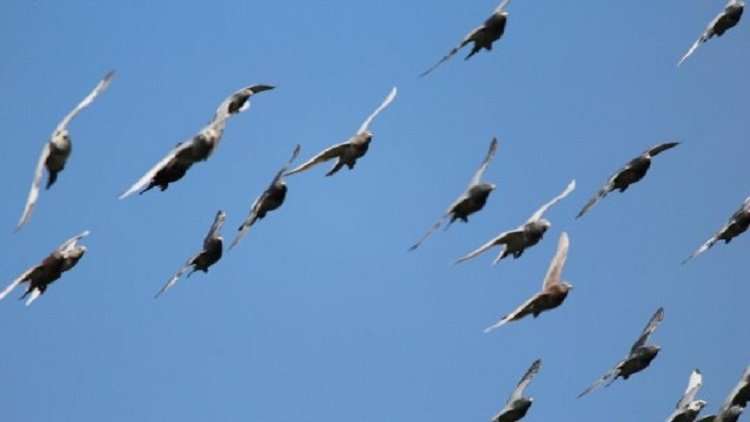To have the in depth knowledge about the flight paths of homing pigeons, two scientists- named Takao Sasaki and Dora Biro, of Research Associates in the Department of Zoology at Oxford University carried out a study testing whether these pigeons can gradually improve their flight paths over time or not.
They did an experiment with a chain of 10 birds, some of them were familiar with the route and some of them had never flown the course before. The idea behind the experiment was to how the individuals pass their experience of the route down to the next pair generation. They could also enable the collective intelligence of the group to continuously improve the route’s efficiency from the experiment.
The result of the experiment published in Nature Communications which suggest that over time, the student does indeed become the teacher. The pairs’ homing performance improved consistently over generations — they streamlined their route to be more direct. Later generation groups eventually outperformed individuals that flew solo or in groups that never changed membership. Homing routes were also found to be more similar in consecutive generations of the same chain of pigeon pairs than across them, showing cross-generational knowledge transfer, or a “culture” of homing routes.
Takao Sasaki, co-author and Research Fellow in the Department of Zoology said: ‘At one stage scientists thought that only humans had the cognitive capacity to accumulate knowledge as a society. Our study shows that pigeons share these abilities with humans, at least to the extent that they are capable of improving on a behavioural solution progressively over time. Nonetheless, we do not claim that they achieve this through the same processes.’
When people share and pass knowledge down through generations, our culture tends to become more complex over time, There are many good examples of this from manufacturing and engineering. By contrast, when the process occurs between homing pigeons, the end result is an increase in the efficiency, (in this case navigational), but not necessarily the complexity, of the behaviour.
Takao Sasaki added: ‘Although they have different processes, our findings demonstrate that pigeons can accumulate knowledge and progressively improve their performance, satisfying the criteria for cumulative culture. Our results further suggest that cumulative culture does not require sophisticated cognitive abilities as previously thought.’
This study shows that collective intelligence, which typically focuses on one-time performance, can emerge from accumulation of knowledge over time.
Dora Biro, co-author and Associate Professor of Animal Behaviour concludes: ‘One key novelty, we think, is that the gradual improvement we see is not due to new ‘ideas’ about how to improve the route being introduced by individual birds. Instead, the necessary innovations in each generation come from a form of collective intelligence that arises through pairs of birds having to solve the problem together — in other words through ‘two heads being better than one’.’
Moving forward, the team intend to build on the study by investigating if a similar style of knowledge sharing and accumulation occurs in other multi-generational species’ social groups. Many animal groups have to solve the same problems repeatedly in the natural world, and if they use feedback from past outcomes of these tasks or events, this has the potential to influence, and potentially improve, the decisions the groups make in the future.

robotcannon on April 20th, 2017 at 10:40 UTC »
I believe (no joke) that the the technical word for passing knowledge down generations is called a "meme"
https://en.wikipedia.org/wiki/Meme
seabassseabreeze on April 20th, 2017 at 07:46 UTC »
This is really interesting
Carsinogenic on April 20th, 2017 at 07:35 UTC »
Crows, and birds in the raven family also have this ability.